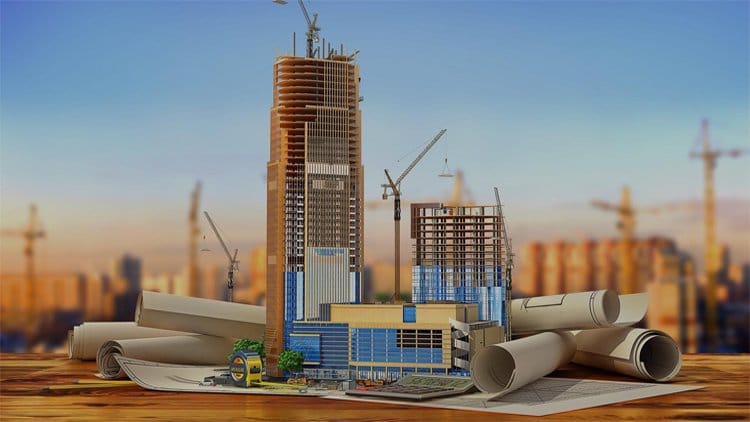No products in the cart.
European Construction Technologies for Efficiency
The European construction industry is renowned for its innovative technologies that drive efficiency, sustainability, and precision. As global standards for construction continue to rise, these advanced methods are setting new benchmarks in building practices worldwide. For a company like Tasnim Tau, which specializes in the sale and export of bricks, understanding and integrating these European technologies is crucial to offering products that meet the demands of modern construction. This article explores how European construction technologies enhance efficiency and why bricks, with their superior qualities, remain a cornerstone of these advancements.
1. Prefabrication and Modular Construction
European construction has increasingly embraced prefabrication and modular construction techniques. These techniques involve assembling components of a building off-site in a controlled environment. These components are then transported to the construction site for quick assembly. This approach significantly reduces construction time, minimizes on-site waste, and enhances the overall quality of the building.
- Efficiency: Prefabrication allows for simultaneous construction processes, such as building modules in the factory while laying the foundation on-site. This parallel workflow reduces the overall construction timeline.
- Precision: Factory settings provide controlled environments that ensure high accuracy in constructing building components. This results in better quality and fewer on-site adjustments.
- Cost-Effectiveness: By reducing on-site time and minimizing material waste, prefabrication lowers overall construction costs.
2. Building Information Modeling (BIM)
Building Information Modeling (BIM) is a digital representation of a building’s physical and functional characteristics. In Europe, BIM is increasingly becoming a standard practice in construction due to its ability to enhance collaboration and reduce errors.
- Enhanced Collaboration: BIM allows all stakeholders—architects, engineers, contractors, and clients—to work from a unified digital model. This collaboration ensures everyone is on the same page, reducing misunderstandings and costly errors.
- Time Savings: BIM prevents construction delays by identifying potential issues in the design phase. This proactive approach saves time and keeps projects on schedule.
- Sustainability: BIM supports sustainable building practices by optimizing material usage and reducing waste.
3. Sustainable Construction Practices
Sustainability is a critical focus in European construction, with technologies aimed at reducing the environmental impact of building activities. This includes using eco-friendly materials, energy-efficient designs, and waste-reduction strategies.
- Recycled Materials: Using recycled materials, such as bricks, reduces waste and lowers the carbon footprint of construction projects.
- Energy Efficiency: Advanced insulation materials and energy-efficient designs contribute to lower energy consumption in buildings, aligning with Europe’s stringent environmental regulations.
- Waste Management: Technologies that minimize on-site waste through precise planning and execution are becoming increasingly common, making construction more sustainable.
The Superiority of Brick in Modern Construction
Amidst these technological advancements, bricks continue to hold a place of superiority in construction for several reasons:
- Durability: Bricks are renowned for their long-lasting nature. Structures built with bricks can stand for centuries, requiring minimal maintenance.
- Thermal Insulation: Bricks naturally provide excellent thermal mass, helping to regulate indoor temperatures and reduce energy costs.
- Fire Resistance: As non-combustible materials, bricks enhance the safety of a building by providing excellent fire resistance.
- Aesthetic Flexibility: Bricks offer a timeless aesthetic that can be adapted to traditional and modern architectural designs.
- Sustainability: Made from natural materials, bricks are eco-friendly, aligning with the sustainable practices emphasized in European construction.
FAQs About European Construction Technologies and Bricks
Q1: How do European construction technologies impact the use of bricks?
A1: European construction technologies like BIM and prefabrication complement the use of bricks by enhancing precision and efficiency in construction. These technologies ensure that bricks are used most effectively, minimizing waste and optimizing building performance.
Q2: Are bricks still relevant in modern, technology-driven construction?
A2: Absolutely. Bricks are preferred for durability, thermal properties, and aesthetic appeal. European construction technologies enhance the application of bricks, making them more efficient and sustainable in modern projects.
Q3: What makes bricks a sustainable choice in construction?
A3: Bricks are made from abundant natural materials with a low environmental impact. Their durability means that structures require less maintenance and fewer replacements over time, reducing their ecological footprint.
Conclusion
The integration of advanced European construction technologies is revolutionizing the industry, making construction faster, more efficient, and more sustainable. However, the timeless qualities of bricks—durability, thermal efficiency, fire resistance, and aesthetic versatility—ensure they remain a superior choice in modern building practices. At Tasnim Tau, we are committed to providing high-quality bricks that meet the standards of today’s sophisticated construction needs. Whether you’re embarking on a new build or renovating an existing structure, our products are designed to deliver lasting value and performance.


